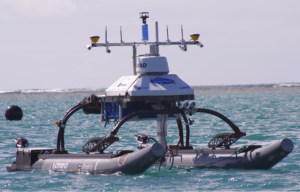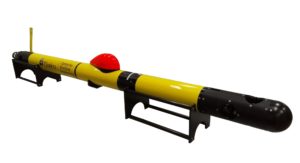Maritime Engineering & Robotics
Headed by Professor Karl Sammut, the Maritime Engineering & Robotics team have research strengths principally divided across two main areas:
1) Autonomous marine vehicles
Headed by Professor Karl Sammut, the Maritime Engineering & Robotics team have research strengths principally divided across two main areas:
1) Autonomous marine vehicles
The group has been working on autonomous marine vehicles for over 14 years and has one of the most advanced maritime robotic facilities in Australia. Research initially focused on developing improved control systems and navigation systems for operating in GPS- and communication-denied environments, such as underwater. This research has since evolved into developing fully automated mission planners with task scheduling capabilities for unmanned vehicles, and autonomous underwater launch and recovery docking guidance systems for unmanned underwater vehicles.
Our current research is exploring the use of machine learning to improve path planning for autonomous surface vessels by incorporating seakeeping capability to steer a vessel autonomously through high sea state conditions. The group has two large scale autonomous surface vessels, a medium size autonomous underwater vehicle, and a hybrid remotely operated/autonomous underwater vehicle. These vehicles and algorithms have been developed to both support the group’s research activities in maritime autonomy and to support scientific mission payloads for environmental monitoring, survey work, site inspection and for defence applications.


2) Composite structures and materials for marine applications
The application of fibre reinforced polymer (FRP) composites in maritime engineering was originally developed to meet the demand for building lightweight, strong, corrosion-resistant durable structures, particularly for the aerospace sector. FRP can overcome corrosion problems experienced with steel or aluminum alloys and environmental degradation suffered by wood. FRP can significantly reduce the weight of a structure but still maintain the desired performance and structural integrity. However, under marine environment conditions, the properties of FRP composites and structures can degrade due to UV, moisture, temperature and ageing; creating the potential of accidentally incurring fractures and delamination. The research group is endeavouring to evaluate, understand and optimise the performances of FRP composites and structures used in marine environments to enhance their durability and integrity. The use of these new composite materials is being considered for the development of new more robust hull structures for unmanned surface and underwater vehicles that are required to spend extensive periods at sea.
Antifouling solutions
The research group are also studying the characteristics of biofouling with a view to developing new enhanced antifouling coatings that are longer lasting and more durable. The primary application for this work is for coating hydrophone surfaces to ensure that the fouling does not attenuate the transmission behaviour of the acoustic surfaces. This work is particularly relevant in the case of acoustic sensors that are placed in-situ or carried on marine vehicles immersed in water for extensive periods.